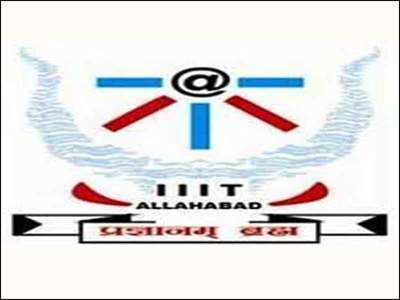- News
- Education News
- News
- Workshop on ADASIVA at IIIT-A
Trending
This story is from July 23, 2018
Workshop on ADASIVA at IIIT-A
With the advent of deep learning architectures, almost all areas of signal processing have undergone significant changes in their approach, this is primarily because machine learning is at the forefront of solving many problems in computer signal, image, vision and biometrics.

Representational Image
ALLAHABAD: With the advent of deep learning architectures, almost all areas of signal processing have undergone significant changes in their approach, this is primarily because machine learning is at the forefront of solving many problems in computer signal, image, vision and biometrics.
These views were expressed by several experts during two week long summer school cum workshop on machine learning on advances in deep architecture for signal, image & vision applications (ADASIVA) at Indian Institute of Information Technology, Allahabad.
Dr Angshul Majumdar from Indraprasth Institute of Information Technology, Delhi started the session with basics of CNN, auto encoder and deep belief networks focusing on the fact that deep neural networks perform better than a shallow one. Then he introduced a new learning framework called deep dictionary learning and siamese deep dictionary learning which can be utilised for vector quantisation and compression. He explained and proved that dictionary learning was actually a neural network. He focused on the concepts of transform learning and convolution transform learning.
Dr Shekhar Verma from department of Information Technology, IIIT-A initiated the lecture session with basic principle and working of recurrent neural networks (RNN) and long short-term memory(LSTM) explaining the complex and sequential nature of neural networks. Then he focused on dimensionality reduction techniques like Principle Component Analysis (PCA), Autoencoders which is a supervised version of PCA.
Dr Partha Pratim Roy introduced on EEG and its applications. He explained how labeled brain signals are exploited as training data to detect which art of signal is responsible for which reflex action. He also focused multimodal fusion i.e. on multimodalities like EEG or mobile pattern to access the mobile, to recognise whether the right person is accessing it or not.
These views were expressed by several experts during two week long summer school cum workshop on machine learning on advances in deep architecture for signal, image & vision applications (ADASIVA) at Indian Institute of Information Technology, Allahabad.
Dr Angshul Majumdar from Indraprasth Institute of Information Technology, Delhi started the session with basics of CNN, auto encoder and deep belief networks focusing on the fact that deep neural networks perform better than a shallow one. Then he introduced a new learning framework called deep dictionary learning and siamese deep dictionary learning which can be utilised for vector quantisation and compression. He explained and proved that dictionary learning was actually a neural network. He focused on the concepts of transform learning and convolution transform learning.
Dr Shekhar Verma from department of Information Technology, IIIT-A initiated the lecture session with basic principle and working of recurrent neural networks (RNN) and long short-term memory(LSTM) explaining the complex and sequential nature of neural networks. Then he focused on dimensionality reduction techniques like Principle Component Analysis (PCA), Autoencoders which is a supervised version of PCA.
Dr R Balasubramanian on the occasion said that with the basic concepts of watermarking incorporating the concepts of polynomial kernel functions for nonlinear SVM. He further discussed texture segmentation followed by EEG signal detection. Then he introduced the concept of deep belief networks, especially for smoke detection.
Dr Partha Pratim Roy introduced on EEG and its applications. He explained how labeled brain signals are exploited as training data to detect which art of signal is responsible for which reflex action. He also focused multimodal fusion i.e. on multimodalities like EEG or mobile pattern to access the mobile, to recognise whether the right person is accessing it or not.
End of Article
FOLLOW US ON SOCIAL MEDIA











